Dejan Azinović
High-Res Facial Appearance Capture from Polarized Smartphone Images
Dec 02, 2022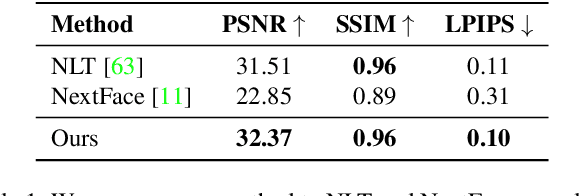

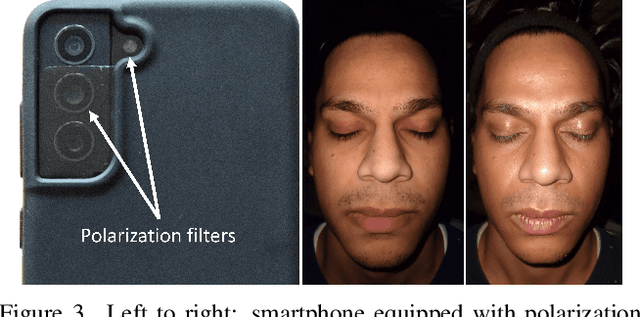
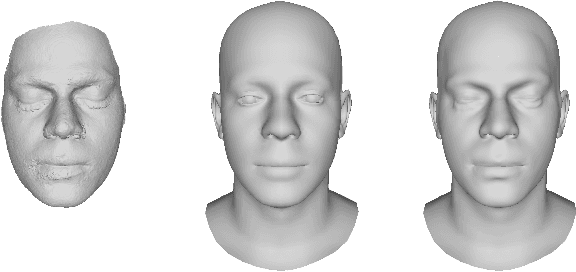
Abstract:We propose a novel method for high-quality facial texture reconstruction from RGB images using a novel capturing routine based on a single smartphone which we equip with an inexpensive polarization foil. Specifically, we turn the flashlight into a polarized light source and add a polarization filter on top of the camera. Leveraging this setup, we capture the face of a subject with cross-polarized and parallel-polarized light. For each subject, we record two short sequences in a dark environment under flash illumination with different light polarization using the modified smartphone. Based on these observations, we reconstruct an explicit surface mesh of the face using structure from motion. We then exploit the camera and light co-location within a differentiable renderer to optimize the facial textures using an analysis-by-synthesis approach. Our method optimizes for high-resolution normal textures, diffuse albedo, and specular albedo using a coarse-to-fine optimization scheme. We show that the optimized textures can be used in a standard rendering pipeline to synthesize high-quality photo-realistic 3D digital humans in novel environments.
Neural RGB-D Surface Reconstruction
Apr 09, 2021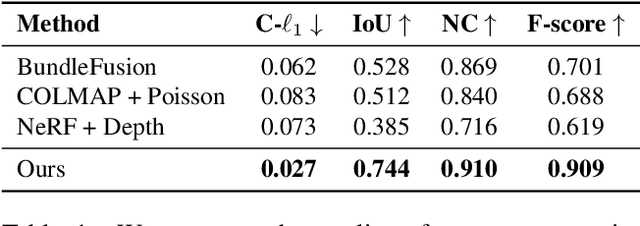

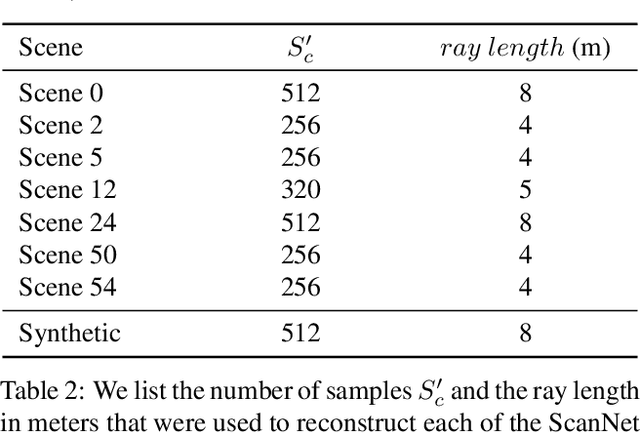
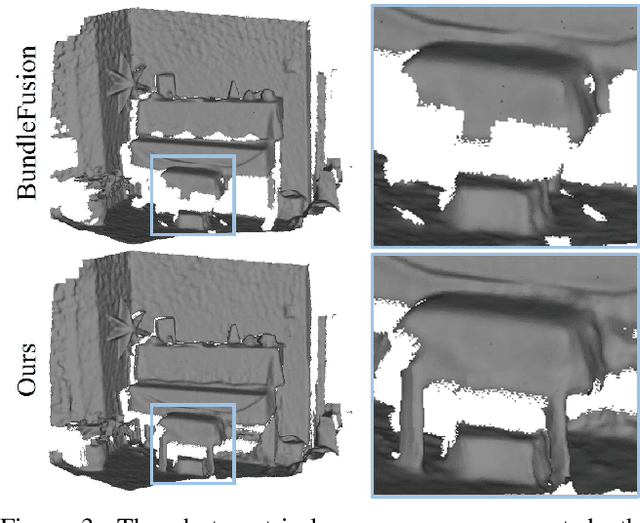
Abstract:In this work, we explore how to leverage the success of implicit novel view synthesis methods for surface reconstruction. Methods which learn a neural radiance field have shown amazing image synthesis results, but the underlying geometry representation is only a coarse approximation of the real geometry. We demonstrate how depth measurements can be incorporated into the radiance field formulation to produce more detailed and complete reconstruction results than using methods based on either color or depth data alone. In contrast to a density field as the underlying geometry representation, we propose to learn a deep neural network which stores a truncated signed distance field. Using this representation, we show that one can still leverage differentiable volume rendering to estimate color values of the observed images during training to compute a reconstruction loss. This is beneficial for learning the signed distance field in regions with missing depth measurements. Furthermore, we correct misalignment errors of the camera, improving the overall reconstruction quality. In several experiments, we showcase our method and compare to existing works on classical RGB-D fusion and learned representations.
Inverse Path Tracing for Joint Material and Lighting Estimation
Mar 17, 2019
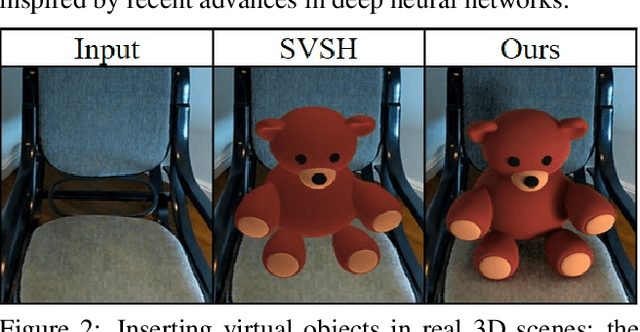

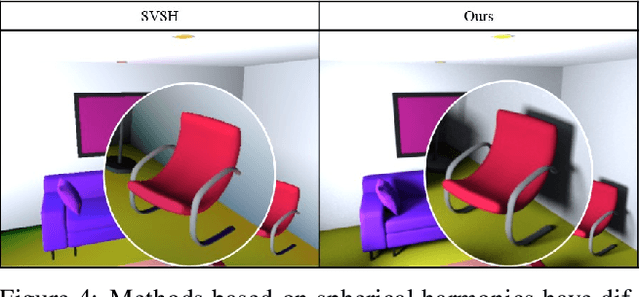
Abstract:Modern computer vision algorithms have brought significant advancement to 3D geometry reconstruction. However, illumination and material reconstruction remain less studied, with current approaches assuming very simplified models for materials and illumination. We introduce Inverse Path Tracing, a novel approach to jointly estimate the material properties of objects and light sources in indoor scenes by using an invertible light transport simulation. We assume a coarse geometry scan, along with corresponding images and camera poses. The key contribution of this work is an accurate and simultaneous retrieval of light sources and physically based material properties (e.g., diffuse reflectance, specular reflectance, roughness, etc.) for the purpose of editing and re-rendering the scene under new conditions. To this end, we introduce a novel optimization method using a differentiable Monte Carlo renderer that computes derivatives with respect to the estimated unknown illumination and material properties. This enables joint optimization for physically correct light transport and material models using a tailored stochastic gradient descent.
 Add to Chrome
Add to Chrome Add to Firefox
Add to Firefox Add to Edge
Add to Edge